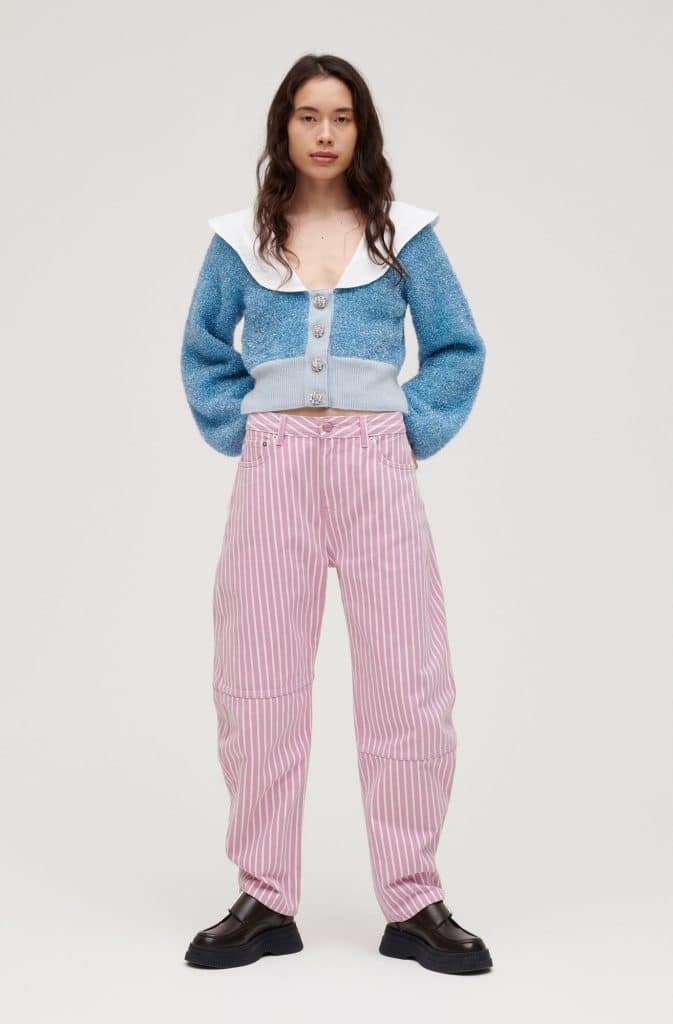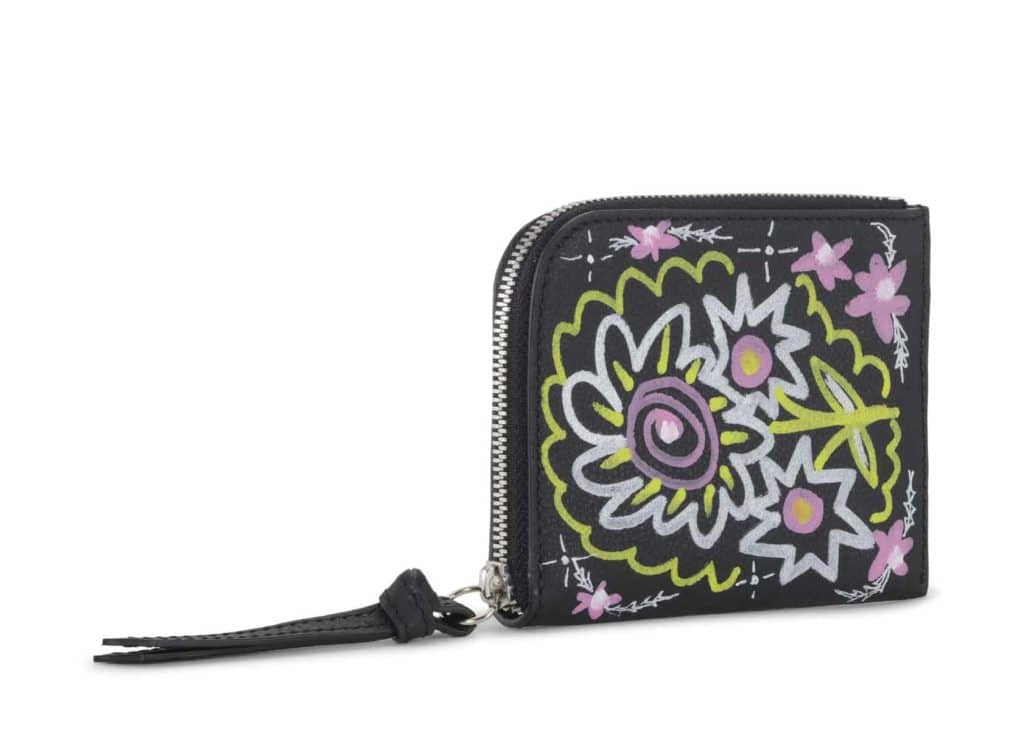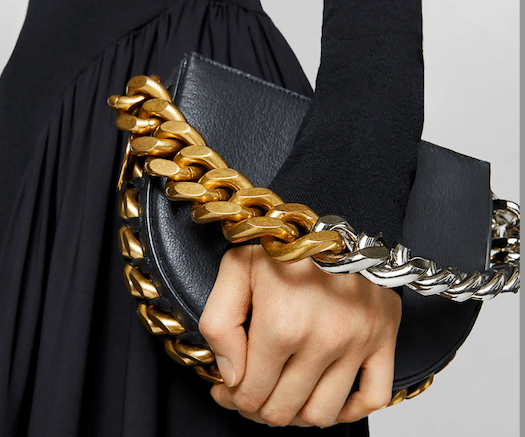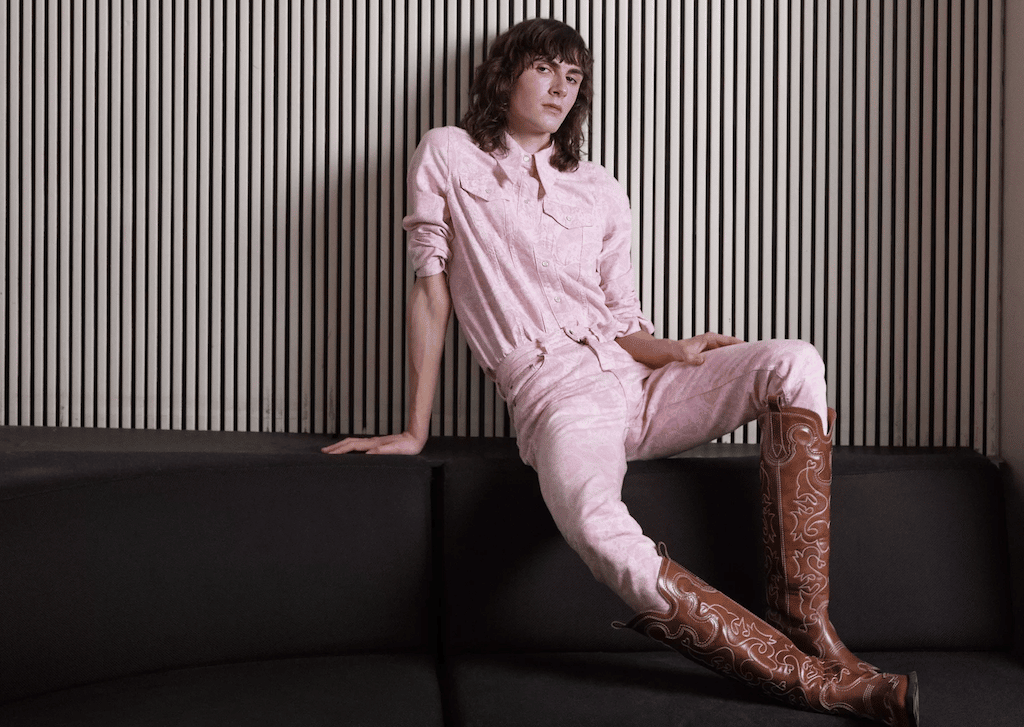Ganni’s vision of luxury is synonymous with sustainability. Its latest offerings feature recycled fabric, zero-waste material, and mushroom leather as proof.
In 2020, affordable Danish luxury brand Ganni announced its Responsibility Game Plan. It’s a comprehensive tour de force, spanning forty-four goals with 2023 targets. The plan includes efforts in four key areas: People, Planet, Product, and Prosperity. Its latest effort toward those goals is “Fabrics of the Future,” an initiative that includes the introduction of several sustainable materials: Renewcell’s Circulose cotton pulp made from discarded textiles, and Mylo—the vegan mushroom leather from Stella McCartney partner, Bolt Threads.
“Through Fabrics of the Future we are committed to supporting start-ups in scaling their innovations,” Nicolaj Reffstrup, Ganni’s founder, said in a statement. “Fabric innovations will play a crucial role in making fashion more circular as well as creating lower impact materials, but for that to happen brands need to place bets and take risks. We refuse to accept the industry status quo and with this initiative, we have created a solid framework where research, innovation, and cross-industry knowledge sharing can live together. ”
Renewcell’s Circulose
Using a 100-percent renewable-energy-powered process, Circulose is a cotton material that doesn’t require cotton fields to produce. Renewcell takes discarded cotton and dissolves it into a pulp. The materials are reclaimed textiles that are processed at Renewcell’s Sweden-based plant. There’s a benefit to creating a pulp over just shredding old garments—a common practice in materials re-use. Renewcell says that as a pulp, Circulose is reduced to a molecular stage, creating longer, and more consistent fibers resulting in a higher quality product.
H&M was the first retailer to bring Circulose to market in 2020. Last December, Levi’s introduced its iconic 501 design using the material.

Last month, Renewcell raised nearly $32 million to help double its production.
“The global fashion industry is committed to going circular and we are determined to contribute as much and as fast as we can to attain this crucial goal,” Lundström said in March as the company announced plans to scale from 60,000 to 120,000 metric tons of annual capacity ahead of schedule.
Ganni is using the Circulose in two pairs of pants in its Pre-Fall collection; the pants blend 15 percent of Circulose into the viscose material.
“Working with progressive brands like Ganni is essential to our effort to make fashion circular at scale—we need their help to prove the quality and style potential of Circulose,” said Patrik Lundström, Renewcell CEO. “It’s a major milestone for us to make it into Ganni’s main collection. Circulose changes fashion from the inside by liberating designers from the old constraints of textile-to-textile recycled materials.”
Bolt Threads Mylo leather
Not quite at the scale that Circulose is, but well on its way is Bolt Threads’ Mylo vegan leather made from mycelium, the root structure of mushrooms. Ganni has launched a limited production run of wallets and saddle bags with the novel material.
Ganni displayed the products at the Global Fashion Summit this week in Copenhagen. Last October, Reffstrup said selling leather was as outdated as “smoking on TV.” The brand announced it would phase out leather and skins “entirely” by next year.

“We have set a drastic goal of phasing out virgin leather by 2023 and seeing innovative materials like Mylo transform into high-quality, high-design products only makes me more ambitious,” Reffrstrup said. “It’s our job to create responsible solutions that aren’t just at par with traditional product offerings but exceed them.”
Mushroom leather is garnering attention from major luxury labels for its realistic texture and durability. The Mylo leather is produced in a 100-percent renewable-energy-powered facility.
“Unlike leather production, making Mylo material doesn’t involve raising livestock. As disposable incomes rise around the globe, so will the demand for meat and leather goods. This demand can’t be met using the land and water it takes to raise cattle,” Bolt Threads says on its website.
“The mycelium we grow for Mylo material is produced in days, unlike the resource-intense process of raising livestock, which can take years.
“Our preliminary impact assessment indicates the incredible environmental benefits of mycelium-based leather. In 2022, we’ll share the results of an independent life cycle assessment.”
Bolt’s leather has appeared in Adidas’ iconic Stan Smith sneakers, and is coming to a limited-edition Stella McCartney handbag. It was recently featured in two bags by athletic wear brand Lululemon.

New York’s Ecovative and California’s MycoWorks are also working to bring vegan mushroom leather to market. Ecovative has a growing roster of development partners including Calvin Klein, Tommy Hilfiger, and Pangaia; and MycoWorks has been developing a mushroom leather bag for French luxury house Hermès.
Ganni’s also working with fellow Danish brand Stem on a zero-waste production process that uses the entirety of garment fabric. More than 90 percent of Ganni’s current production qualifies as part of its responsible styles where at least 50 percent of the material is recycled, lower-impact, or certified organic. But the goal is 100 percent. Where it does hit 100 percent is on its traceability; Stages one through four of Ganni’s supply chain are fully traceable and published, and all of Stage one and two suppliers are published with the Open Apparel Registry.


